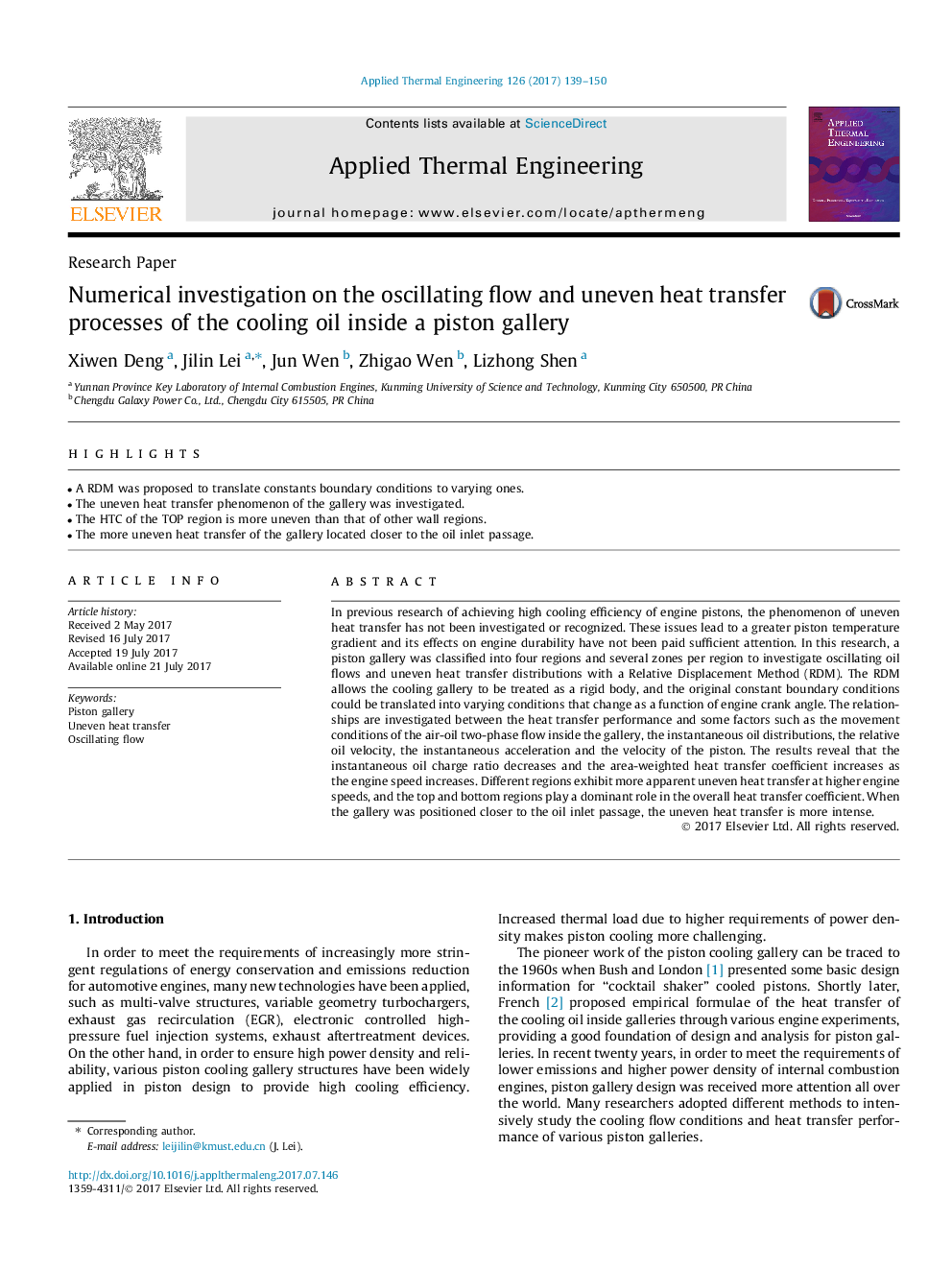| Article ID | Journal | Published Year | Pages | File Type |
|---|---|---|---|---|
| 4990423 | Applied Thermal Engineering | 2017 | 12 Pages |
Abstract
In previous research of achieving high cooling efficiency of engine pistons, the phenomenon of uneven heat transfer has not been investigated or recognized. These issues lead to a greater piston temperature gradient and its effects on engine durability have not been paid sufficient attention. In this research, a piston gallery was classified into four regions and several zones per region to investigate oscillating oil flows and uneven heat transfer distributions with a Relative Displacement Method (RDM). The RDM allows the cooling gallery to be treated as a rigid body, and the original constant boundary conditions could be translated into varying conditions that change as a function of engine crank angle. The relationships are investigated between the heat transfer performance and some factors such as the movement conditions of the air-oil two-phase flow inside the gallery, the instantaneous oil distributions, the relative oil velocity, the instantaneous acceleration and the velocity of the piston. The results reveal that the instantaneous oil charge ratio decreases and the area-weighted heat transfer coefficient increases as the engine speed increases. Different regions exhibit more apparent uneven heat transfer at higher engine speeds, and the top and bottom regions play a dominant role in the overall heat transfer coefficient. When the gallery was positioned closer to the oil inlet passage, the uneven heat transfer is more intense.
Keywords
Related Topics
Physical Sciences and Engineering
Chemical Engineering
Fluid Flow and Transfer Processes
Authors
Xiwen Deng, Jilin Lei, Jun Wen, Zhigao Wen, Lizhong Shen,
